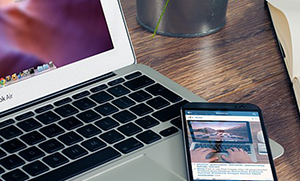Some already knew about RAW and some don't. New photographer tend to shoot in JPEG, not realizing that there's a greater power inside the camera that they are using. If you go to photography forum a lot, you realize that almost all photographer shoot in RAW, the benefit we get from this is the key to survival inside the photography industry.
Today I will tell you 10 reason why you must shoot in RAW and after reading this, you will understand why RAW will save your life.
1. Quality
This first point could be the only answer you need on why RAW is very beneficial. When you shoot in RAW, the camera will record all the data that came through the sensor and save it inside the photo file. This will give you the highest quality files that you can get with the setting you just used.
Trust me, this will save you a bunch of time in the editing process. But let me make this clear, when you press the shutter button, technically the photo you created is in RAW, but when you used JPEG setting in your camera, the RAW file will automatically compressed to a JPEG file, converting the RAW information into JPEG. Resulting in a much smaller file size but less information.
2. Arghh.. It's so bright!
What's the difference between JPEG and RAW level of brightness? Huge difference I tell you.
While JPEG records 256 levels of brightness, RAW records an enormous brightness level between 4,096 to 16,384 levels! Crazy right?
Brightness level play a huge part in black and white photography, resulting in a much smoother images.
3. I can see your pimple perfectly!
The time you are on the editing room, you will realize that with RAW you can control the sharpening and noise option in Adobe Lightroom. This option is way much better than the one inside your camera. With this you can always go back again and re-edit the images in a jiffy.
4. Can I undo that?
When you edit and later export your images, you have the power to go back and re-edit it again. You see, when you edit a RAW files, all the change that you make are actually save inside your hard drive and not actually on top of your RAW files.
After you finished editing and convert the file to TIFF or JPEG, the RAW files will remain with all the information it have. Say no more of copying your images because you afraid you might destroy it in the editing process.
5. I use it duhh..
Okay.. let see it this way. I consider myself as a professional photographer, meaning that I will always provide my clients with the best photo quality I can get. With RAW files all that is possible. Greater control when doing editing and also a greater quality when you print it.
So.. are you ready to step on the professional area with RAW files?
 About the Author:
About the Author:Handoko Rama is a freelance photographer and cinematographer. Living in the island of paradise, Bali. Where everyday feels like holiday for him. Currently pursuing his dream job with Nat Geo and also reaching maximum level for his World of Warcraft Character.
portfolio: www.mibpictures.com













EmoticonEmoticon